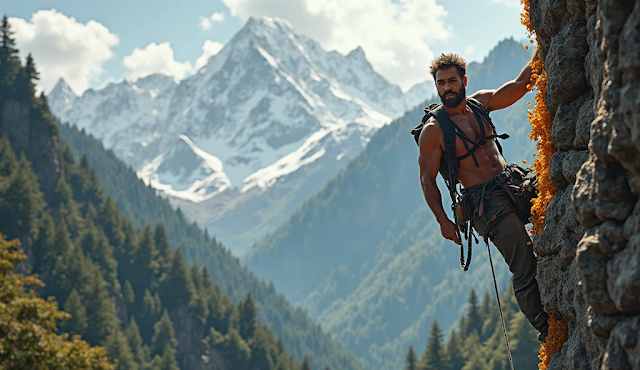Nestled in the Kathmandu Valley, Bhaktapur Durbar Square stands as a timeless testament to Nepal’s glorious past. This UNESCO World Heritage Site, with its intricate temples, regal palaces, and vibrant traditions, offers an immersive experience into the soul of Newari culture. Whether you’re a history buff, architecture enthusiast, or curious traveler, Bhaktapur Durbar Square promises an unforgettable adventure. Let’s uncover the secrets of this ancient marvel.
1. Introduction to Bhaktapur Durbar Square: A UNESCO Gem
Bhaktapur Durbar Square, or Khwopa in the local Newari language, is one of three royal squares in the Kathmandu Valley and arguably the best-preserved. Unlike its counterparts in Kathmandu and Patan, Bhaktapur’s square retains an aura of authenticity, with its cobblestone streets and centuries-old brick buildings largely untouched by modernity. Declared a UNESCO World Heritage Site in 1979, the square serves as an open-air museum of medieval art and architecture. Visitors are greeted by a symphony of carved wood, terracotta, and gilded metalwork—a true reflection of Nepal’s rich cultural heritage.
2. Historical Background: The Legacy of the Malla Dynasty
Bhaktapur’s golden era began in the 12th century under the Malla dynasty, which ruled the Kathmandu Valley until the 15th century. After the kingdom split into three city-states—Kathmandu, Patan, and Bhaktapur—the latter flourished as a hub of trade, art, and spirituality.
Royal Seat: The square served as the royal palace complex for Bhaktapur’s Malla kings, who commissioned many of its iconic structures.
Earthquake Resilience: Despite suffering damage in the 1934 earthquake and the 2015 Gorkha earthquake, restoration efforts have preserved its grandeur.
This historical resilience makes Bhaktapur a symbol of Nepal’s enduring spirit.
3. Architectural Marvels: Icons of Newari Craftsmanship
The square’s skyline is dotted with pagodas, shikharas, and courtyards. Here are the must-see landmarks:
Nyatapola Temple: The Five-Story Wonder
Built in 1702 by King Bhupatindra Malla, Nyatapola is Nepal’s tallest pagoda. Dedicated to Siddhi Lakshmi, the Hindu goddess of prosperity, its five tiers symbolize the five elements. The temple’s steep staircase is guarded by stone figures—from wrestlers to elephants—each ten times stronger than the one below.
55 Window Palace: A Royal Masterpiece
This 15th-century palace, adorned with intricately carved wooden windows, showcases Newari artistry. The Golden Gate (Sun Dhoka), its crowning jewel, features a stunning torana (archway) depicting goddess Taleju, the Mallas’ titular deity.
Vatsala Temple & the Bell of Barking Dogs
This sandstone temple, dedicated to Shiva’s consort Vatsala Devi, houses the Bell of Barking Dogs. Legend says its ring silenced local canines, a testament to King Jagajjyoti Malla’s quirky problem-solving.
Bhairavnath Temple: The Fierce Protector
Originally a single-story shrine, this temple was expanded to three tiers in 1718. It honors Bhairav, Shiva’s wrathful form, and comes alive during Bisket Jatra with chariot processions.
4. Cultural Significance: Festivals and Living Traditions
Bhaktapur’s cultural calendar is a riot of colors and rituals:
Bisket Jatra: Celebrate Nepali New Year in April with a tug-of-war over a towering chariot.
Dashain: Witness sacrificial rituals at the square’s temples during Nepal’s biggest Hindu festival.
Pottery Square: Watch artisans shape clay using techniques unchanged for centuries.
Don’t miss Juju Dhau (King Curd), a creamy yogurt served in clay pots—a local delicacy.
5. Visitor Information: Tips for an Enriching Experience
Getting There: Bhaktapur is 13 km from Kathmandu. Take a taxi (NPR 1,500) or local bus (NPR 50) from Ratna Park.
Entry Fee: NPR 1,500 for foreigners; SAARC nationals NPR 500. Tickets are valid for multiple days.
Best Time to Visit: October–November (clear skies) or March–April (festivals). Mornings offer quieter exploration.
Guided Tours: Hire a local guide (NPR 2,000–3,000) for hidden stories and access to restricted areas.
6. Nearby Attractions: Beyond the Square
Pottery Square: Participate in a pottery class or shop for handcrafted souvenirs.
Changu Narayan Temple: A short drive away, this UNESCO site is Nepal’s oldest Vishnu temple.
Thimi Village: Explore terraced fields and traditional mask-making workshops.
7. Preservation Efforts: Safeguarding Heritage
Post-2015 earthquake, initiatives by Nepal’s Department of Archaeology and international bodies like UNESCO have focused on rebuilding using traditional materials. Travelers contribute to preservation through entry fees, making tourism a vital lifeline.
8. Conclusion: Why Bhaktapur Durbar Square Is Unmissable
Bhaktapur Durbar Square isn’t just a collection of buildings—it’s a living narrative of Nepal’s identity. From the awe-inspiring Nyatapola Temple to the lively Bisket Jatra, every corner whispers tales of devotion and artistry. As you wander its lanes, you’ll find yourself stepping back in time, immersed in a world where history and culture dance hand in hand.
Plan your visit today and let Bhaktapur Durbar Square weave its magic into your travel memories.
Bhaktapur Durbar Square, UNESCO World Heritage Site Nepal, Nyatapola Temple, 55 Window Palace, things to do in Bhaktapur, Newari architecture, Bisket Jatra festival, Nepal cultural heritage, day trip from Kathmandu, Bhaktapur travel guide.
Discover Bhaktapur Durbar Square, a UNESCO gem in Nepal. Explore its history, architecture, festivals, and travel tips for an unforgettable cultural journey.







0 Comments